The following story is dedicated to the six firefighters of Squad 252 in Bushwick, Brooklyn, who lost their lives at the World Trade Center on September 11, 2001.
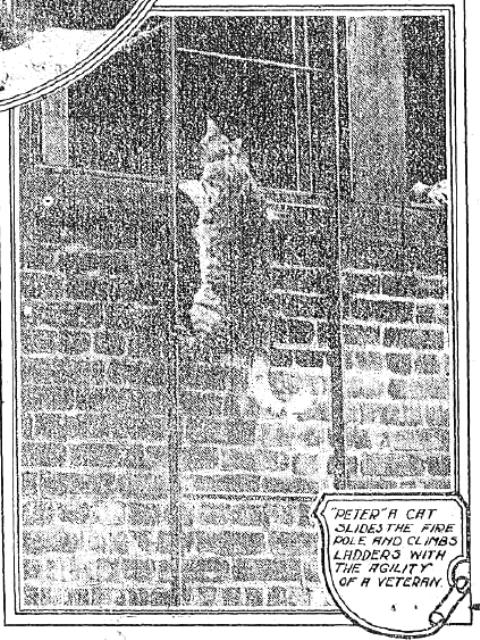
I’ve never known a cat to be very fond of fires and fire trucks – albeit, my cat Boo does love to climb ladders and bake in front of the fireplace — but old New York certainly had its share of feline fire department mascots.
Although cats were generally considered to be poor firefighters, at least a few tried their paws at climbing ladders and sliding down the poles. One special cat in Brooklyn even enjoyed going to fires.
In the old days (1800s and early 1900s), the Fire Department of New York allowed the firemen to keep one dog, one cat, and singing birds in their firehouse (apparently there was no limit on the singing birds). These animals, in addition to the horses that pulled the apparatus, provided companionship for the men, who were often required to stay at their firehouses for more than a week at a time with only a few hours off.
Peter Never Missed a Call
Sometime around 1905, a little orange tabby cat arrived at the new firehouse of Engine Company No. 152 in the Bushwick section of Brooklyn. No one knows how he arrived at 617 Central Avenue, but by 1913 he was a favorite mascot of the firefighters and a very popular cat in the neighborhood. During his years of active duty, he never missed a call.
When he was an active fire cat, Peter’s greatest skill was sliding down the pole in the firehouse. According to the firefighters who spoke to a reporter from the Brooklyn Daily Eagle on July 30, 1913, he could make the descent from the third-floor sitting room to the ground floor in three seconds. (The following video of another pole-sliding cat in about 1964 will give you a good idea of what Peter did.)
At the first sound of an alarm, Peter would dash from the second-floor sleeping room to the pole, and, with a flying leap, throw his paws about it and slide down. Then with one leap he would land on the driver’s seat of the 1907 Rech-Marbaker hose wagon. The firemen said he always seemed very proud to be the first member ready for action.
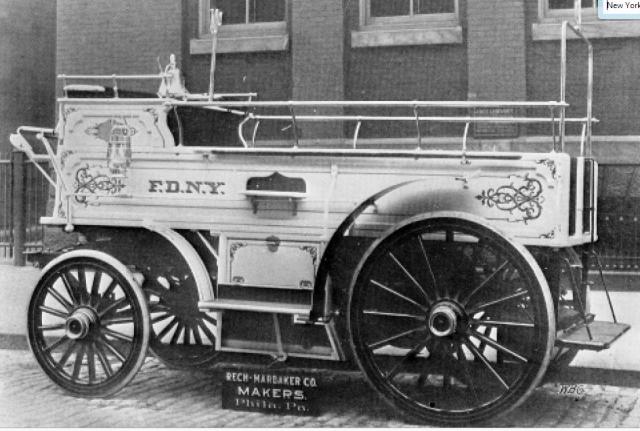
Peter joined the men on every call, and — although I find these hard to believe — would even follow them up the ladder as far as possible, until the smoke and flames drove him back.
One day Peter took a bad fall from the ladder and had to go on sick leave. After that incident, he stopped going on calls. Although Peter would still slide down the pole and leap onto the driver’s seat, he’d jump off the engine before it took off (with consent from Captain Henry B. Burtis, of course).
Since Engine Company No. 152 didn’t switch from a horse-drawn wagon to a motorized American LaFrance pumper until May 26, 1919, Peter spent his retirement years resting with the horses. He also continued to perform his tricks for people who came to the firehouse to visit the legendary fire cat.
1897 ¬– 1998: From Engine 52 to Squad 252
When Peter’s engine company first went into service on April 1, 1897, it was called Engine 52. This new engine company was led by Foreman Edward Eichhorn and Assistant Foreman Louis Hauck. On January 1, 1898, the City of Brooklyn was incorporated into the five boroughs of New York City.
The engine company officially became part of the FDNY on January 28, 1898, and about two years later, was renumbered to Engine 152 to avoid confusion with Engine 52 in the Bronx.
In 1913, the Fire Commissioner added 26 new companies in Brooklyn and Queens. At this time, engine companies in these two boroughs were given the prefix 2, so Engine 152 became Engine 252.
One hundred years after it became part of the FDNY, Engine 252 was reorganized as Squad 252 and assigned to the Special Operations Command, which consists of seven squad companies, five rescue companies, a hazardous materials unit, and three marine companies.
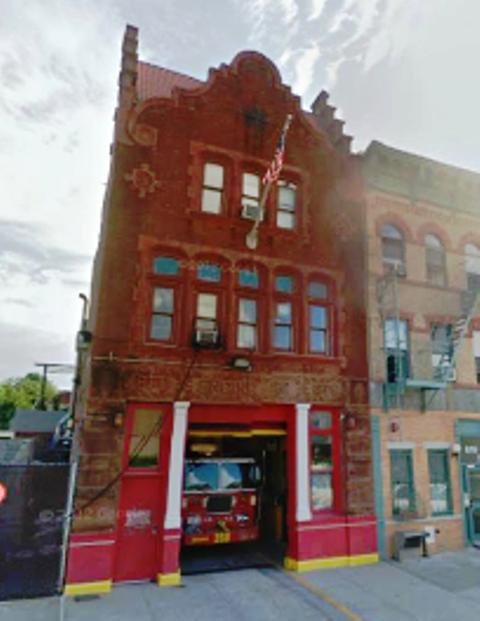
The Firehouse at 617 Central Avenue
Before there was a firehouse on Central Avenue in Bushwick, there was a farm owned by William Van Voorhis, and later, when he died, by Augustus Ivins.
In fact, the entire area was divided into a series of relatively small plots owned by farming families, including the Chauncey, Cooper, Covert, Moffat, and Schaeffer lands.
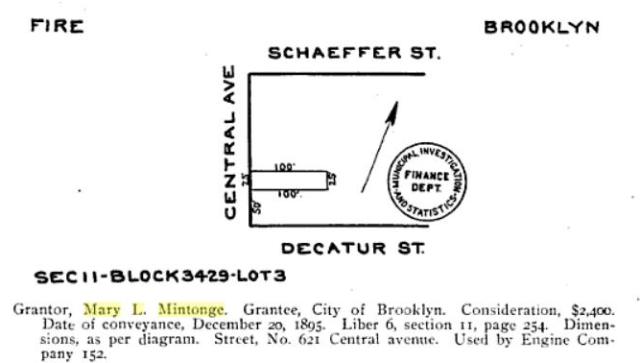
On December 20, 1895, the New York Fire Department purchased a 25 x 100 foot lot from Mary L. Mintonge for $2,400.00. (Mrs. Mintonge was superintendent of a small school called the Women’s Christian Temperance Union No. 5 at Hooper and Harrison Avenue.)
The three-story Flemish revival firehouse was designed by the renowned Parfitt Brothers — Walter E., Henry D., and Albert E. The English immigrant brothers designed one of the finest firehouses ever erected in Brooklyn, with a prominent scrolled front gable and stepped end gables that alluded to the 17-century Dutch settlement of Bushwick.
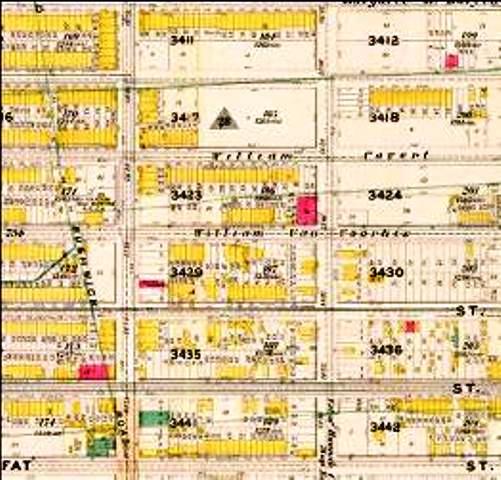
The brick and Lake Superior red sandstone building featured room for the apparatus and horses on the ground floor, the foreman’s office, a sleeping room for the foreman and his assistant, a sleeping room for the firefighters on the second floor, a sitting room on the third floor with a combination billiard/pool table, and a rooftop garden.
In early days, the firemen could feel breezes from the ocean as they relaxed in the garden. By 1908 their view was obstructed, but the men still enjoyed the garden on hot summer nights. Sometimes they detected fires from atop the roof before the alarm was called in. Knowing cats as well as I do, I’m sure Peter also took many cat naps on the roof during his active and retirement years.
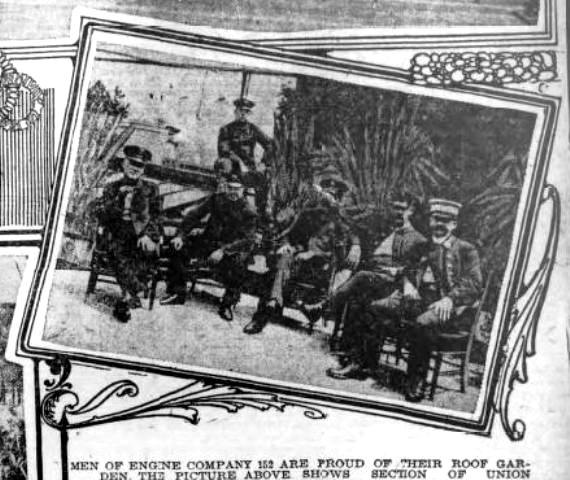
SEPTEMBER 11, 2001
On September 11, 2001, Squad 252 responded to the 5th alarm call to the World Trade Center. Six of the squad’s members on duty that morning made the ultimate sacrifice and never returned: Lieutenant Timothy Higgins, Firefighter Tarel Coleman, Firefighter Pete Langone, Firefighter Pat Lyons, Firefighter Tommy Kuveikis and Firefighter Kevin Prior.




Just like “Pickles, the famous fire cat” from Esther Averill’s 1950’s children’s books!
Wow, I never heard about Pickles — and I worked in children’s book publishing for more than 10 years with Scholastic! How uncanny — or should I say, uncatty! I wonder if Esther knew about Peter?